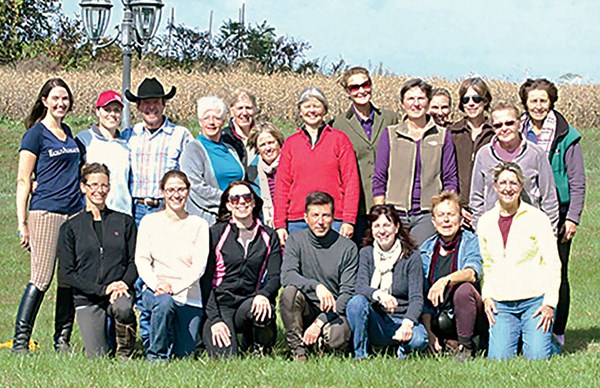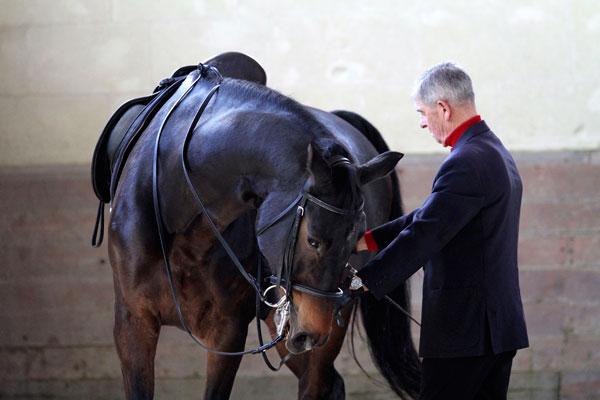
On a chilly spring morning, about 50 avid equestrians gathered at Lemaliza Farm in central Pennsylvania. The excitement and anticipation were palpable as we prepared for our clinic in the first-ever Teacher’s Training Course of the Ecole de Légèreté in the United States. The school is not yet well known in the U.S., but its followers are enthusiastic and loyal and will gladly enumerate the benefits of this style of training—which literally translates to the “School of Lightness”— a modern take on sometimes archaic French classical dressage. Like many of the clinic participants, I took a roundabout way to find the school. For me, it was a serendipitous discovery while I was riding professionally in Europe. A colleague of mine had ridden in an open clinic of the Ecole de Légèreté in Finland. When I saw her unique methods for sensitizing a horse to contact with the bit and for teaching a horse to stretch down into neck extension, I had to know more. She was able to make great changes in horses’ responsiveness, contact, balance and activity without the use of coercion or force and with great speed and efficiency. She was the first trainer I’d heard reference the French classical master Philippe Karl.
Once I read Karl’s books, I was hooked. His methods, the basis of which are respect for the nature, intelligence and sensitivity of the horse, worked well with training systems that I had learned as a young rider. From that point on, I was always looking for a way to train with Karl. I kept up to date with the clinics offered throughout Europe and was thrilled to learn that the school would finally come to the U.S. in 2013. While the school does offer open clinics that any rider can join, this one was special because it was a Teacher’s Training Course. Participating riders must be highly skilled professional riding teachers with a following of students. The course is also a serious commitment—each participant must attend a four-day clinic three times per year for the next three years.
So on that damp morning in April, the other clinic participants and I couldn’t wait to meet Karl’s right-hand man, our teacher for the next three years, Bertrand Ravoux. He was a nationally acclaimed young rider in France, who grew up studying the French classical tradition.
In 1996, Ravoux began studying at Saumur, the national French riding school, where he was first exposed to Karl, another master at the national school. Ravoux was most drawn to Karl’s focus on respect for the nature of the horse. He states, “Philippe Karl has developed a system to school any kind of horse in any discipline, putting communication, relationship and respect first.” Ravoux demonstrates the flexibility of these methods by working with mixed-breed ponies, Thoroughbreds and other nontraditional dressage mounts.
Since 2006 Ravoux has continued to train with Karl and has run teacher’s training courses and open clinics in five countries. When asked about commonalities and differences he finds in spreading this method across the globe, he says, “What is surprising if we look at all the students in the different countries, is the diversity of horses and riders having success with the method. As it respects the mental and physical needs of horses, the progression doesn’t depend on the breed, aptitude or cost of the horse…. And the few conditions for a rider are not his technical level, his discipline or his social background, but…the will and capacity of being curious.”
The two clinics in the U.S. in 2013 (which took place in New Mexico and Pennsylvania) were Ravoux’s and the school’s first foray into the U.S.
As we move toward the end of the inaugural teacher’s course in the U.S., there are more and more ways for new auditors and guest riders to participate. Plus the school admits new candidates on a rolling basis, allowing the clinics to continue with new instructors each year. For more information regarding the course, visit legerete-usa.com or philippe-karl.com.











